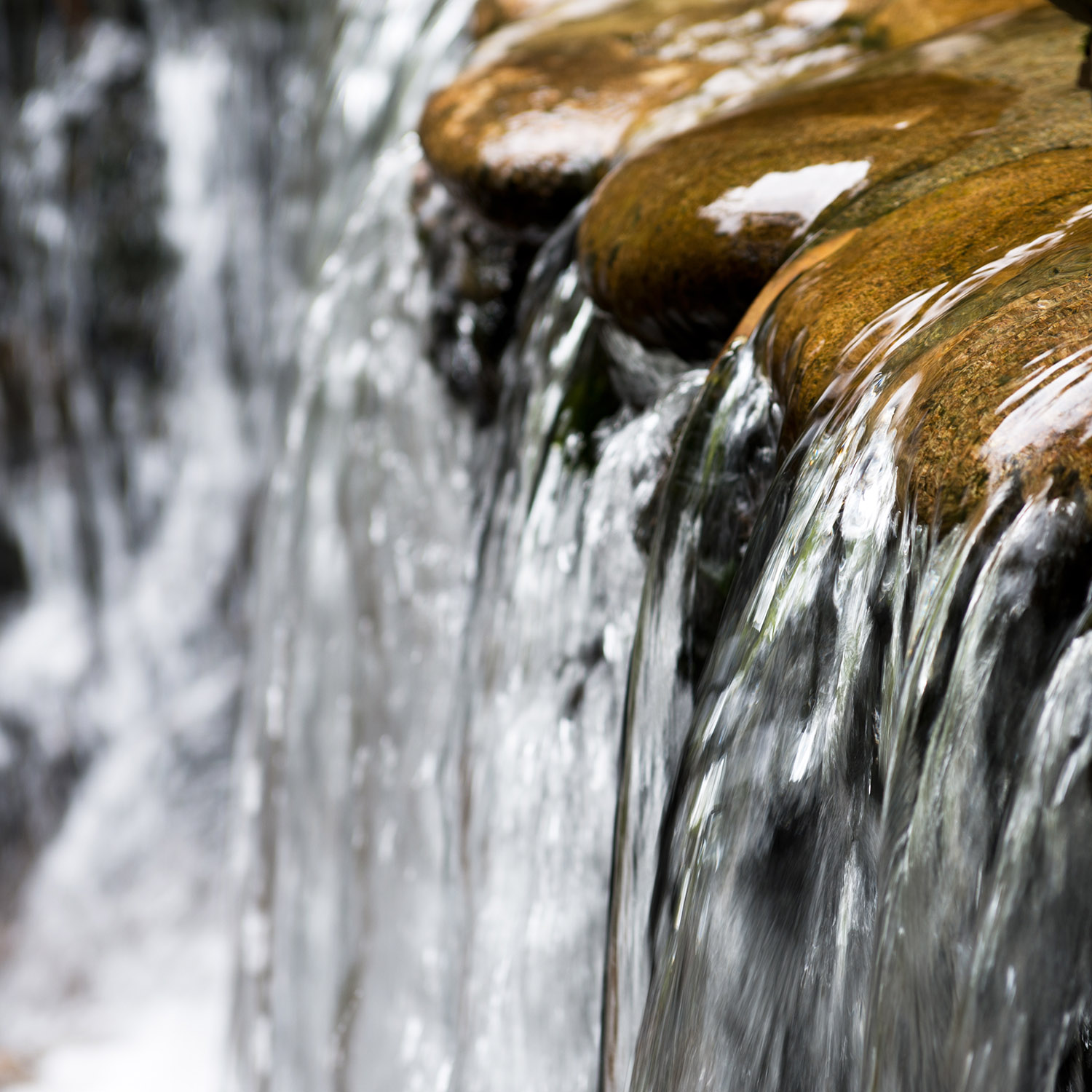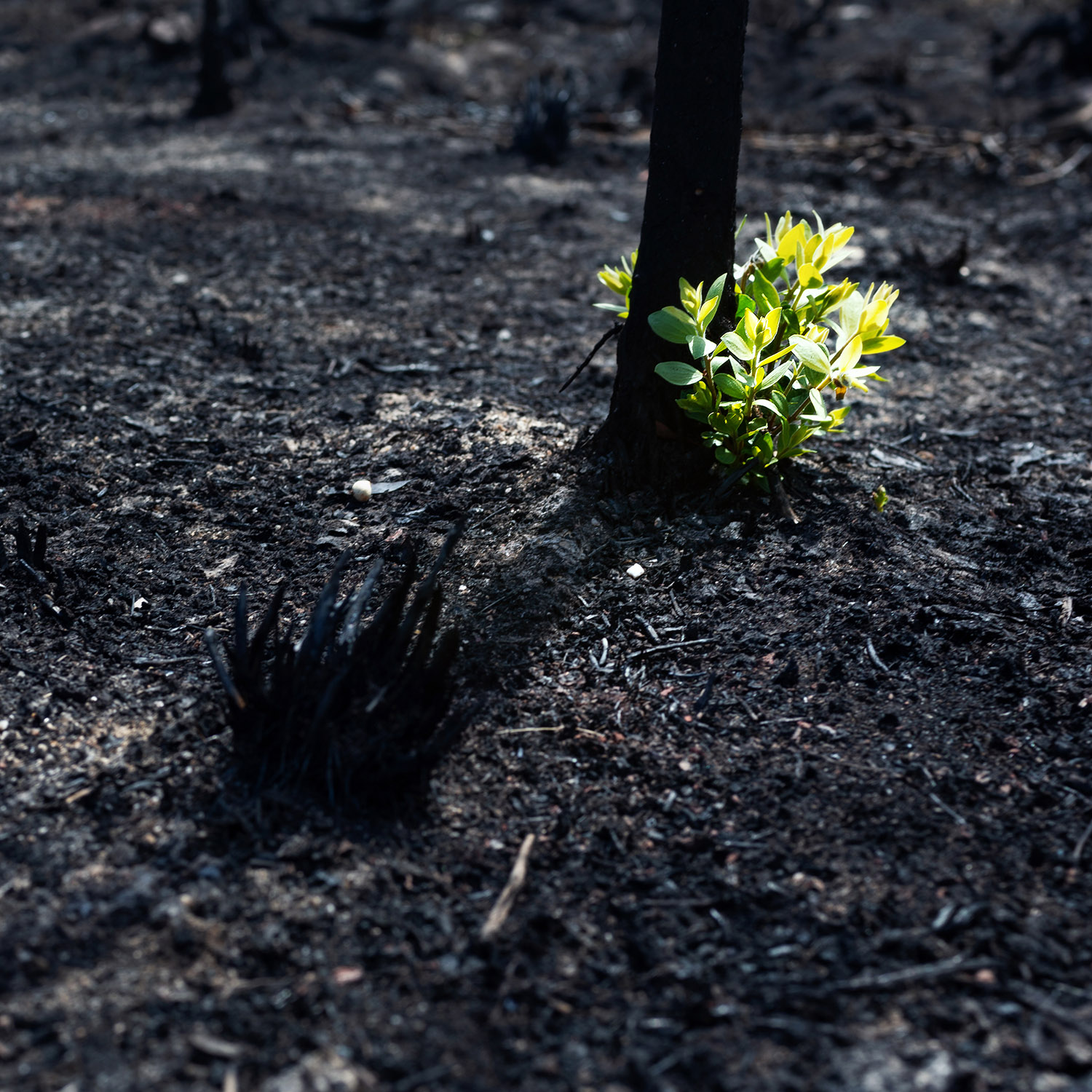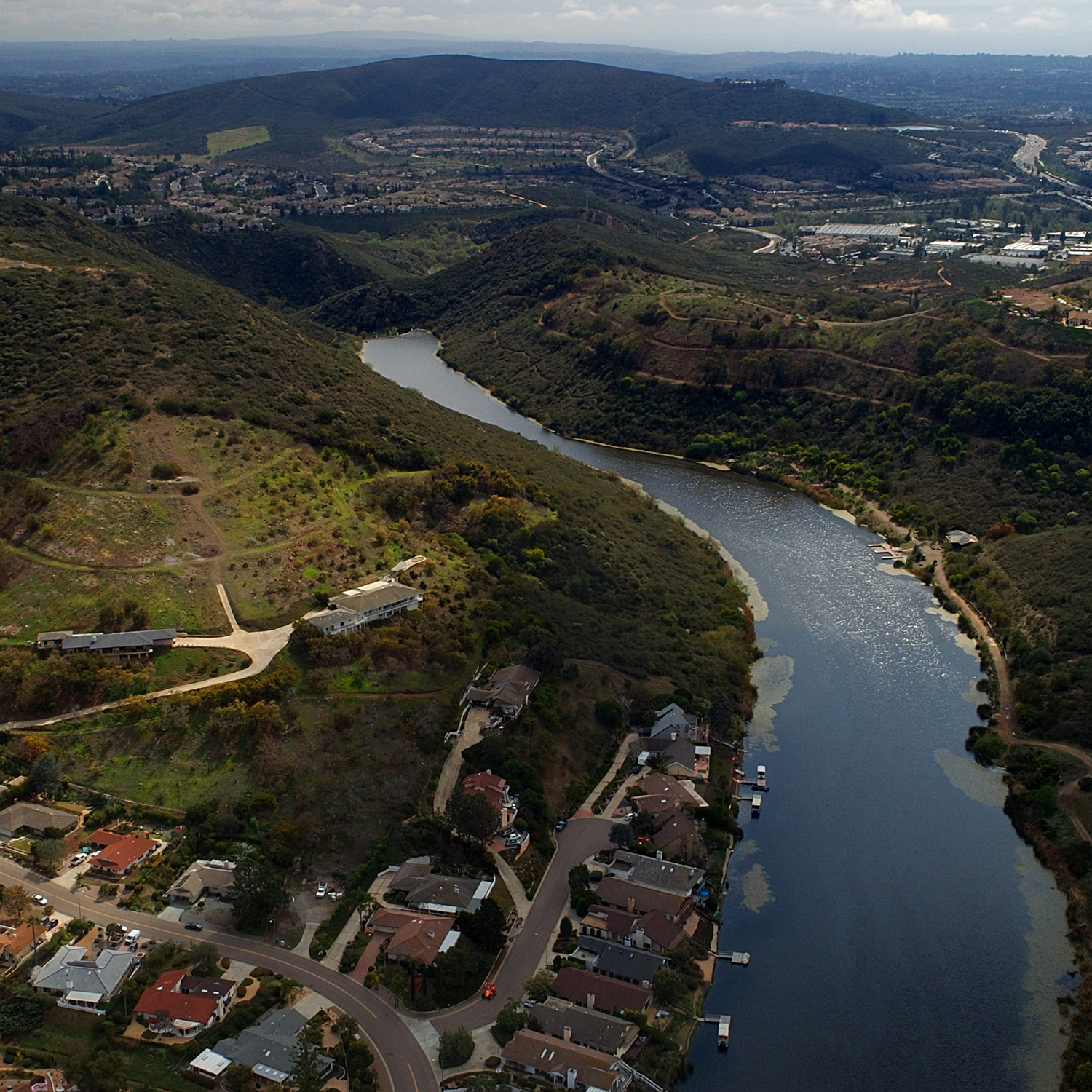Vegetation Treatment Water Quality Permitting
Vegetation Treatment Water Quality Permitting
Department: Water Boards
Program Description: In July 2021, the State Water Resources Control Board developed and began implementing a streamlined statewide waste discharge permit (Order WQ 2021-0026-DWQ) for projects covered by the Board of Forestry’s Vegetation Treatment Program (CalVTP) Programmatic Environmental Impact Report. Projects that are found to be within the scope of the environmental impact report are automatically enrolled in the water board’s permit without additional application process and at no-cost to the permitees. Water Board staff have also added guidance for permitees and the public to the Water Board’s program webpage. State water board staff are continuing to improve implementation by developing guidance information for the Regional Water Control Boards, template communications for permittees and by providing technical support to permitees.
Program Impact: The waste discharge permit leverages the CalVTP Programmatic Environmental Impact Report. This made the CalVTP a fully streamlined permit with no additional paperwork or fees, while still providing critical protection to California’s water resources.
Resilience in Action: The Water Boards: The State and Regional Water Boards were able to provide recommendations to the San Jose Water Company (SJW) about their CalVTP project called the San Jose Water Company Forest Health Program – P1. This project is designed to improve forest health, increase climate resiliency, and reduce the risk of wildfire. Lack of vegetation management, climate change, periods of successive drought, and development in the wildland urban interface have contributed to substantial change in forested landscapes across Santa Clara County. This project is one component within a series of projects in the area as part of a landscape-scale wildfire resiliency effort.
The Water Boards advised SJW about specific Standard Project Requirements related to water quality based on the project’s planned vegetation treatment activities. This project has now become certified under the CalVTP process with just over 1,900 acres to be treated. The comment review process allowed the Water Boards to work together and share regional expertise, leading to sensible recommendations that contribute to both wildfire prevention and water quality protection.
RESOURCES
California Vegetation Treatment Program (CalVTP) Environmental Impact Report
California Vegetation Treatment Program (CalVTP) Environmental Impact Report
Department: Board of Forestry and Fire Protection
Program Description: Communities raised concerns that the CEQA environmental review process was slowing down their ability to launch critical wildfire fuel reduction projects. The California Vegetation Treatment Programmatic Environmental Impact Report(CalVTP) is an environmental impact review covering 20-million-acres of the non- federal, fire-prone land in California. The CalVTP enables efficiencies in the CEQA process that can reduce review timelines from multiple years to just months.
This approach reduces redundancies without sacrificing environmental quality by allowing project sponsors to build on known and verified environmental analysis as they begin their site-specific environmental review for individual projects.
Partner departments like the State and Regional Water Boards and California Department of Fish and Wildlife collaborated with the Board of Forestry and Fire Protection to ensure their environmental standards are reflected in the CalVTP, creating a streamlined environmental review process for approvals needed from those agencies.
CEQA exemptions are still used for projects that qualify. Large or more complex use the CalVTP to achieve their environmental compliance.
Once the site-specific environmental analysis is complete and approved under the CalVTP, it is valid for up to ten years, allowing multiple rounds of vegetation treatment and maintenance using the same environmental document.
Program Impact: To help ensure consistent and easy use of the new streamlined CalVTP process, the State hired an environmental consulting firm to conduct the Project Specific Analysis (the application required by the CalVTP). This helps ensure that local foresters have support as they get acquainted with a new environmental process. These completed examples will help future applications be prepared faster and more efficiently at a reduced cost.
As of April 2023, 46 CalVTP projects have been approved and another 47 are underway, totaling 93 projects utilizing this expedited tool. These environmental reviews have been coordinated with five CDFW regions and four USFWS field offices as well and the California Coastal Commission and the State Water Resources Control Board and various Regional Water Quality Control Boards; each agency coordination effort was approached with the objective of streamlining consultation with that agency for future CalVTP projects.
Resilience in Action: The Alder Creek Sequoia Resilience and Post-Fire Restoration Project PSA/Addendum, proposed by the Sierra Nevada Conservancy and Save the Redwoods League, exemplifies the usefulness of the program EIR, even for very complex and multi-jurisdictional projects.
In addition to vegetation treatment, the project included road repair and road decommissioning, which were related to vegetation treatment, but not covered in the CalVTP. These activities were addressed in an addendum, which was efficiently integrated with the project specific analysis. Consultation with USFWS and CDFW was accelerated by leveraging the education that had been provided and processes that had been established for other approved CalVTP projects. In total, the project specific analysis and addendum were finalized within 3 months, a process that previous would have taken at least a year.
RESOURCES
Wildfire Resilience Block Grants
Wildfire Resilience Block Grants
Department: CAL FIRE
Program Description: CAL FIRE created Wildfire Resilience Block Grants in 2022 to build local capacity while providing financial and technical forestry assistance to nonindustrial forest landowners. The power of this program comes from the regional partner’s ability to set parameters for assistance that directly meet the unique needs of the landowners in their local region. As part of these grants, CAL FIRE also created and funded Emergency Forest Restoration Teams (EFRT) to quickly restore forestlands burned by wildfires, often funding them while the fire is still ongoing.
Projects under this grant:
- Make funding available through agreements with landowners to pay for specific, non-commercial ecological forest improvement and wildfire resilience practices.
- Provide technical assistance to promote information sharing and education on the full range of effective forest management practices and opportunities as well as forest management education and management planning.
Program Impact: This support for small forest landowners includes:
- Eleven grant funded projects awarded, totaling more than $30 million.
- More than12,000 acres planned for treatment.
- More than 500 individual landowners assisted.
- More than 500,000 seedlings to be planted.
Resilience in Action: The Dixie Fire ignited on July 13th 2021, eventually burning 963,309 acres in Plumas, Butte, Lassen and Tehama Counties. The fire caused significant damage and the destruction of communities and ecologies. Half the fire burned with a tree mortality of 90 percent, creating landscape conditions without the potential for natural regeneration, susceptible to type conversion, erosion, and with residual hazardous fuels.
CAL FIRE awarded an $8M grant to the Feather River Resource Conservation District to formulate an Emergency Forest Restoration Team (EFoRT) in early 2022 to address this unprecedented need. The EFoRT is working with NIPF landowners to provide technical assistance and implement post-fire restoration activities across 2,558 acres. They are providing rapid assessments, securing permitting, and creating an implementation plan to satisfy restoration goals. EFoRT will ultimately implement these forest management plans.


Nursery - Lewis A. Moran Reforestation Center
Nursery - Lewis A. Moran Reforestation Center
Department: CAL FIRE
Program Description: Seedbanks and reforestation are at maximum capacity in California. The demand for tree-growing operations have expanded dramatically over the last few years due to California’s drought, tree mortality and devastating wildfires sweeping through the state. Originally established in 1921, The Lewis A. Moran Reforestation Center is being revitalized and expanded to play a prominent role in meeting California’s reforestation needs.
The nursery makes seedlings available to state and private forestland owners as part of a long-term venture to support statewide reforestation needs, including the California Forest Improvement Program. In the state’s continuing mission to meet growing needs, we are expanding operations to meet long- term vision for the state’s restoration efforts.
This facility also holds the State Seedbank. This long-term repository contains more than 42,000 pounds of seed native to a broad range of areas and elevations in California. This seedbank contains the highest quality seedstock available and provides seed storage for a small fee, both to public and private landowners.
Program Impact: In the last two years, the Lewis A-Moran Reforestation Center has:
- Upgraded facilities to expand seedling greenhouses.
- Funded grants to expand greenhouse space throughout the state, making room for the increasing demand for seedlings.
- Improved cones and seed collection by establishing a Seed Cooperative to share seed/cone and reforestation resources across State, Federal, private and non-profit organizations.
- Established a long term survey of cones.
Resilience in Action: Climate Adapted Seed Tool (CAST) — The Reforestation Center has been working with climate scientists and forest biologists to help better align planting stock with the expected climate stressors at the planting locations. Forest trees, even within the same species, are genetically different from each other and are historically catalogued by geographically mapped areas called seed zones. Seed transfer rules specify a geographic distance beyond which populations should not be moved. In an era of rapidly changing climatic conditions, foresters must match the climatic adaptability of seedlings to the climatic conditions of restoration sites. The Climate Adapted Seed Tool will greatly expand California’s ability to match expected climatic conditions with the seedlings planted, to ensure forests are healthy and productive into the future.

Lewis A. Moran Reforestation Center forester tending to seedlings

Lewis A. Moran Reforestation Center seedling greenhouses.
Post-Fire Reforestation and Regeneration
Post-Fire Reforestation and Regeneration
Department: CAL FIRE
Program Description: CAL FIRE’s grant program will support forest health activities for post-fire reforestation and regeneration. This program was developed to meet the recommendations of the Forest and Wildfire Resilience Task Force’s Reforestation report. Post-fire reforestation treatments include site preparation and post-planting maintenance that are directly related to reforestation. The intent of post-fire reforestation treatments is to reforest or restore forestland following catastrophic fire. Reforestation treatments include tree planting, installing tree shelters, site preparation, oak woodland restoration, invasive plant removal, and herbicide.
Program Impact: The projects will restore climate-resilient natural conditions prioritizing native species and a density and distribution of seedlings that address emergency climate conditions including increased fire and drought, consistent with the Governor’s Wildfire and Forest Resilience Task Force’s Reforestation Working Group.
Resilience in Action: CAL FIRE has developed the Post-Fire Reforestation and Regeneration grant guidelines and awards are anticipated in the spring of 2023.
RESOURCES
Forest Legacy Program
Forest Legacy Program
Department: CAL FIRE
Program Description: The Forest Legacy Program protects important forest lands threatened with conversion to non-forest uses, like development. Protection of California’s forests protects wildlife habitat, recreation opportunities, watershed protection, open space, and sustainable timber production. Intact forests also contribute significantly to the storage and sequestration of carbon.
Under this competitive grant program, CAL FIRE purchases or accepts donations of conservation easements or fee title of forest lands. The primary tool CAL FIRE uses to conserve forest lands in perpetuity is permanent Working Forest Conservation Easements. These conservation easements do more than just restrict development on a property, they protect forest values by concentrating on sustainable forest practices that provide both economic value from the land and long-term land stewardship.
Program Impact: Since the early action funding of 2021 and subsequent fire resilience budgets in 2021 and 2022 Forest Legacy has:
- Entered into eight grant agreements worth $22.8 m with private forestland owners.
- Protected 36,358 acres of forestland.
Resilience in Action: Pacific Union College, CAL FIRE and Land Trust of Napa County Working Together to Protect Angwin Forestland

Pacific Union College (PUC), CAL FIRE and the Land Trust of Napa County announced a joint effort to permanently protect and manage more than 1,750 acres of forestland in Angwin, adjacent to the college’s campus. This forest is part of a larger ownership in the Angwin area held by Pacific Union College for more than 100 years. It is one of the most significant forests in Napa County.
The land is owned by Pacific Union College (PUC) near its Angwin campus in the mountains northeast of St. Helena. The forest abuts Las Posadas State Forest and a preserve which supports significant wildlife habitats and rare plants.
Pacific Union College was considering selling its forest lands, but changed course when it learned about the conservation easement through the State’s Forest Legacy Program. The conservation easement permanently eliminates the potential for residential, commercial and agricultural development on the land and creates a continuous corridor of protected land along the entire length of the eastern ridge above Napa Valley.
RESOURCES
Project Implementation in High-Risk Regions – San Diego River
Project Implementation in High-Risk Regions – San Diego River
Department: San Diego River Conservancy
Program Description: The San Diego River Conservancy is working to advance the objectives to strengthen fire resilience, including maintaining fire breaks and defensible space, fuel reduction, restoration, and procurement of new fire apparatus, emergency equipment, and fire trucks. These actions will enhance the management of fire-prone habitats using methods known to reduce the risk and intensity of fires, improve fire access roads, and provide for other fire and forest resilience activities.
Program Impact: Early action investments began with projects to create defensible space and fuel breaks and reduce mostly non-native invasive species in the cities of San Diego, El Cajon, and Santee. The County of San Diego Department of Parks and Recreation will focus on reducing fuel loads on more than 10,000 acres in its parks and preserves. In addition, the Cleveland National Forest is implementing activities for hazard fuel reduction and wildfire emergency preparedness in the headwater of the San Diego and Tijuana Rivers, including the relocation of a helicopter landing zone for access in this remote area. Furthermore, the Conservancy awarded more than $1 million to local Bands within the Kumeyaay Nation for wildfire resilience, vegetation management equipment and two new Type 3 fire engines (Brush Rigs) one to the Barona Band of Mission Indians and one for the Viejas Band of Kumeyaay Indians.
Through a grant to the Resource Conservation District (RCD) of Greater San Diego County, they have provided hazardous fuel reduction removal to hundreds of private landowners at no cost to disabled and low-income homes in the San Diego area. The project targeted landowners in the Wildland Urban Interface areas. Services provided include chipping and establishing defensible space around homes designated by CalFIRE as high-fire risk zones in San Diego County.
The San Diego River Conservancy reduced its timeline from nine months to three weeks to get grants signed, and work started. As a result, projects were able to launch by Memorial Day 2021 and expedited project implementation by a full year. A regular budget appropriation beginning in July with a 9-month grant process would only have seen projects launch on Memorial Day 2022.
Resilience in Action:
United States Forest Service – Cleveland National Forest
The Cleveland National Forest’s Wildfire Resilience and Forest Health project will reduce fuel loads across approximately 1,855 acres, 100 miles of road brushing and maintenance, and prescribed fire supplies. This project also includes conducting more than 700 forest stand exams which will protect sensitive resources and assist in planning future work to restore oak woodlands and expand forest management. Project sites within the Cleveland National Forest include the San Diego River, Sweetwater River, and Tijuana River watersheds.
The project also includes the construction of a helicopter landing zone and three 10,000-gallon underground water tanks to provide a local source of water to help reduce wildfire severity and improve the safety of visitors and first responders in this remote area. These improvements are located at Cha’chaany Hamuk Trailhead (formerly Three Sisters Falls Trailhead) in a remote area of the San Diego River’s upper watershed. This multi-faceted project was designed to enhance the capability for wildfire suppression and rescue people within the High Fire Severity Threat Zone. To support this added workload, Cleveland National Forest will hire additional employees to ensure the protection of sensitive and cultural resources and surge staffing for prescribed fire.
Kumeyaay Diegueño Land Conservancy
Through the Kumeyaay Diegueño Land Conservancy, the Campo Band of Mission Indians, the Campo Fire Protection District, the Jamul Indian Village, the Manzanita Band of the Kumeyaay Nation, the Viejas Band of Kumeyaay Indians, and the Sycuan Band of the Kumeyaay Nation, will use wildfire funds to procure fire-related equipment during wildland fire events. These tribal reservations are designated by CAL FIRE as a very high Fire Hazard Severity Zone and cover more than 57,000 acres. The project will provide new fire vehicles and fire-related equipment such as skid steers with masticators to help reduce the risk of fire by implementing fuel reduction, vegetation management, defensible space, and fuel breaks targeting the removal of diseased, dead, and dying trees.
Native American Conservation Corp (Pilot Project)
The Colorado Desert District of the California Department of Parks and Recreation was the lead agency for this project. State Parks developed a two-year pilot program for local people to participate in training for fire and forest resiliency activities in San Diego County. The goal is to increase employment opportunities for local Native Americans with their respective tribes, State Parks, U.S. Forest Service, or other local organizations.
This pilot project provides on-the-job training at Cuyamaca Rancho State Park in basic wildland fire, chainsaw use in the wilderness, basic first aid and CPR, GPS training, plant identification, and traditional ecological knowledge. In addition to State Park’s leadership, other Conservancy partners assisted in project implementation, including the Kumeyaay Diegueño Land Conservancy, Cleveland National Forest, Resource Conservation District of Greater San Diego County, local Tribal Elders, and San Diego Canyonlands. After participants complete training, some individuals will return to their tribal communities to work, and others have received opportunities to work on fuel crews for State Parks and neighboring tribes.
RESOURCES
Project Implementation in High Risk Regions – Rivers and Mountains
Project Implementation in High Risk Regions – Rivers and Mountains
Department: San Gabriel and Lower LA Rivers and Mountains Conservancy
Program Description: The Rivers and Mountains Conservancy’s (RMC) Wildfire Prevention Grant Program serves to increase wildfire resilience and prevention, improve forest health, restore burned areas, and stimulate workforce development within its 1,600 square mile territory. It offers funding to eligible partners through three main categories associated with different geographic, ecological, and community needs:
1) San Gabriel Mountains and Foothills Fire Prevention Planning and Management.
2) Urban Wildlands and Hills Fire Prevention Planning and Management.
3) Forest Health: Fire Recovery, Response, Restoration, Education and Stewardship.
Priority areas under the program include invasive species management and native habitat revegetation, fuel load maintenance, fire prevention planning, defensible space improvement, and public stewardship building aimed at creating educated and fire-resilient communities.
Program Impact: In its first year and a half of operation, the Rivers and Mountains Conservancy’s Wildfire Prevention Grant Program has awarded more than $12 million in grants to partner agencies conducting wildfire resilience activities in the Los Angeles region—encumbering the entirety of RMC’s Early Action Budget funds. In summer 2022, the RMC entered into a $2.6 million Collection Agreement with the USDA Forest Service to fund the implementation of more than 1,400 acres of hazardous fuels reduction and invasive weed removal in the Angeles National Forest.
Resilience in Action: The RMC’s funding partnership with the National Forest Foundation (NFF) and the Angeles National Forest (ANF) was highlighted as a field tour at the February 2023 Southern California Regional Meeting of the California Wildfire and Forest Resilience Task Force. RMC’s combined investment with both the NFF and ANF, exceeding $6 million, will treat nearly 2,500 acres of hazardous fuels across the San Gabriel Mountains over the next two years with work starting in late winter 2023.
This trilateral partnership is already serving as a model for future state-federal-private cooperative efforts to tackle wildfire resilience challenges in California, and RMC will continue to lead regional collaboration through its participation as a new grantee of the DOC’s Regional Forest and Fire Capacity (RFFC) Program as of January 30, 2023. In complement to legislative funding, the RFFC Program will allow RMC to develop an equity-centered, spatially-explicit portfolio of implementation-ready wildfire resilience projects across its territory and is already working with partners do identify high-priority targets to elevate for pilot funding. This plan will then be used to channel future state funding to the areas with the greatest need.

Figure 34. USDA Forest Service personnel describing progress on fuels treatment areas in the Angeles National Forest outside of Wrightwood, CA on Big Pines Highway under the RMC-NFF “San Gabriel Mountains Landscape Scale Wildfire Resilience Project”.
Project Implementation in High-Risk Regions - Coast
Project Implementation in High-Risk Regions - Coast
Department: State Coastal Conservancy
Program Description: The State Coastal Conservancy’s (SCC) Wildfire Resilience Program supports projects that improve natural lands to reduce the risk of catastrophic fire in areas where people live. These grants accelerate on-the-ground activities that reduce the risks of wildland fires.
Program Impact: The SCC has awarded more than 70 grants to local governments, tribes, nonprofit organizations, and special districts from Trinity County south to San Diego. These projects have supported vegetation treatment, grazing, prescribed fire, and chipping programs. The projects have removed ladder fuels and created defensible space and shaded fuel breaks along the California coast.
SCC ran a solicitation for additional proposals during 2021 and received proposals requesting $88 million in funding. SCC now accepts wildfire projects proposals in an ongoing solicitation.
Resilience in Action: The SCC funded a grant to the Land Trust of Santa Barbara for grazing at the Arroyo Hondo Preserve. The Preserve was in the center of the Alisal Fire and the grazing was credited with saving the historic structures on the Preserve.
A grant to the to the Marin Municipal Water District will not only support fire, but improve biodiversity. This grant will implement vegetation management projects identified in the Biodiversity, Fire, and Fuels Integrated Plan (BFFIP) in the Mount Tamalpais Watershed, and to reduce ladder fuels in the Marin County Parks Blithedale Summit Preserve.

Figure 32 Grant to the Land Trust for Santa Barbara County to implement prescribed herbivory to reduce fuel loads and create a buffer to preventwildfire spread in the southern portion of Arroyo Hondo Preserve. These photos are from shortly after the Alisal fire; the grazed land is unburnt.

Figure 33 Grant to the to the Marin Municipal Water District to implement vegetation management projects identified in the Biodiversity, Fire, and Fuels Integrated Plan (BFFIP) in the Mount Tamalpais Watershed, and to reduce ladder fuels in the Marin County Parks Blithedale Summit Preserve.
RESOURCES
Program Social Media:
- $11m in grants to prepare coastal lands for the coming wildfire season
- Applications for our Forest Health and Wildfire Resilience Program Grants
- Grant Opportunity for Forest Health and Wildfire Resilience Projects!
Project Implementation in High-Risk Regions – Santa Monica Mountains
Project Implementation in High-Risk Regions – Santa Monica Mountains
Department: Santa Monica Mountains Conservancy
Program Description: The Santa Monica Mountains Conservancy prioritized wildfire resilience projects that proactively reduce the risk of wildfire, strengthen wildfire resilience, increase carbon sequestration, rally against the effects of climate change, and dedicate more resources to local community infrastructure.
Program Impact: In 2022, the Conservancy coordinated with partner agencies, non-profit organizations, local tribes, and other stakeholders to kickstart projects that performed one or more of the following types of wildfire resilience activities.
Wildfire resilience activities included:
- Removing dry, hazardous, or non-native vegetation that poses ignition risk and habitat restoration
- Increasing the efficacy of wildfire response through emergency operations equipment and workforce development
- Ignition monitoring program
- Fire hardening at-risk structures
Conservancy wildfire resilience efforts, initiated in 2021 and sustained throughout 2022, addressed major wildfire hazards in the Santa Monica Recreation Area. State funding supported projects that mitigate hazards posed by fuel-vegetation, human actions, and at-risk structures. Investment in workforce development and capacity building in climate, fire resilience, and habitat restoration further enhanced wildfire prevention and emergency response operations. Ongoing project efforts will continue to reduce wildfire risk throughout the 2023 fire season and following years.

Native plants at Elyria Canyon Nursery to be installed at habitat restoration sites
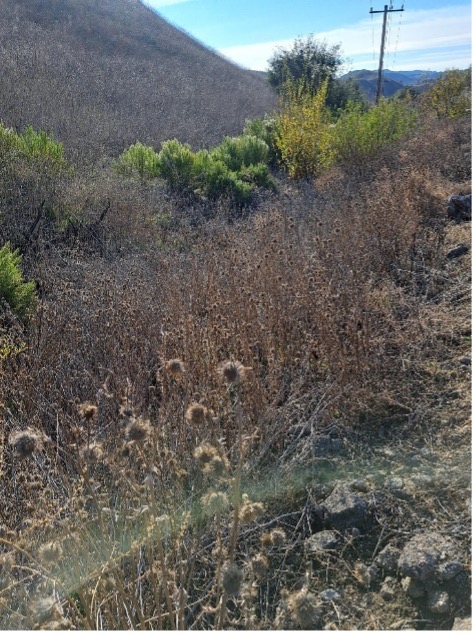
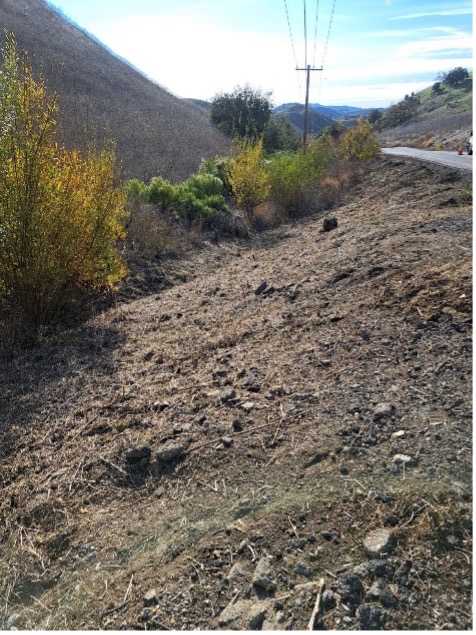
Before and after photos of completed fuel reduction treatments (mowing) to reduce flammable, flashy fuels in strategic locations of the Santa Monica Mountains.
Resilience in Action: Fuel reduction along the ignition-prone highway 101 corridor continued in 2022, and as of January 2023, approximately 2,000 fire-resistant oaks have been planted at five key sites. In the coming years, fire-resistant oak habitat will replace the existent grassy fuel vegetation and serve as a natural fire buffer around the freeway. Funding for workforce development supported an expanded crew of seasonal firefighters in the Fire Division of the Mountains Recreation and Conservation Authority who received basic and advanced fire training classes, drills, and fuel vegetation removal.

Roadside vegetation management and oak habitat planting project to reduce ignition risk posed by nearby US Highway 101

New portable water pumps installed on daily patrol vehicles in conjunction with water tanks and fire hoses allow rangers to respond to fires on patrol

